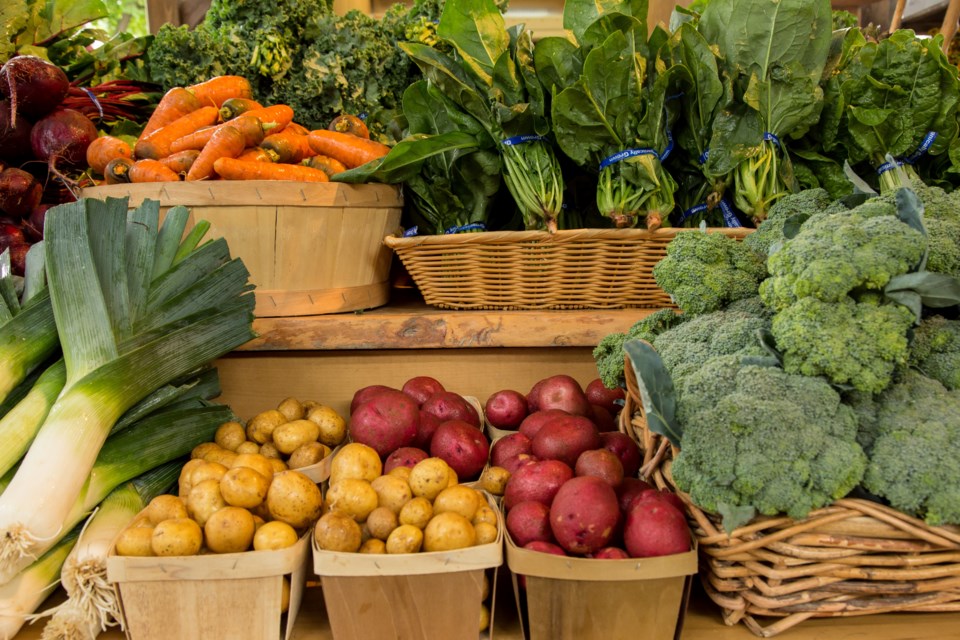As food costs continue to soar, the Seniors’ Community Food Market strives to ease the strain for older adults living on a low income.
The farmers' market-style initiative is offered seven times a month at seven different subsidized housing locations across Guelph, totalling more than 80 markets, annually.
The markets operate weekly on Mondays and Wednesdays.
“It’s a unique program born out of the pandemic. Unfortunately, the need continues to exist. A rise in costs brings a rise in need,” said Hope House community dietitian Molly Roberts.
Last month 264 older adults accessed the markets. That’s up about 12 per cent from the six-month average.
“Unfortunately, the need keeps growing and this is troubling. And this need is being experienced across the board from other local agencies as well,’ Roberts said.
The Seniors’ Community Food Market aims to increase food access to 300 vulnerable seniors by distributing fresh produce, meat, pantry and hygiene items, as well to provide age-specific education and referrals.
“With a rise in food costs, it leaves many of our older adults in a tough position with what they can purchase and how much they can spend,” Roberts said.
“They are finding that they are unable to buy all of the things that they actually need.”
Operated by Hope House Guelph, the program is offered in partnership with the County of Wellington- Housing Services, The SEED, VON, Guelph Independent Living and Guelph Food Bank.
“What’s really great about this project is that it’s a partnership between a variety of agencies. We buy our produce from The SEED and they contribute many of their donated foods to us, including an incredibly valuable item, frozen meat,” Roberts said.
“Meat is one of the many things that older adults are always telling me that they can no longer afford to purchase. So, that really helps when they can get at least one or two pounds of meat a month from the market."
The Guelph Food Bank receives bread from a local bakeries.
"And then they deliver bread to us. They also have huge demands on them right now, but they always make sure that we have bread at all the markets,” Roberts said.
The market visits seven different subsidized housing locations across Guelph
“This brings in customers experiencing food insecurity from all levels,” Roberts said.
Roberts says some older adults are food insecure because of low income, while others also face another barrier, transportation.
“That is why the subsidized housing locations are ideal because many of the people are already there,” Roberts said.
The Seniors’ Community Food Market offers a variety of benefits including nutritious food and necessities and a meaningful point of social contact where seniors can stay safe, active, and feel connected to their community.
“Prior to the pandemic, the program was housed in the Guelph Wellington Seniors Association and was more of a culinary 'cooking together' program where people would cook and eat together. But during the pandemic, we had to pivot to a food delivery model and have food delivered to about 300 people, every week, right to their door,” Roberts said.
“That was done for over a year, and then we shifted to become a market with the idea that food security is partially defined with dignity in mind.”
A hamper at the door is ideal especially during a pandemic when older adults have to shelter at home. But Roberts says, in a perfect world, people would like select their own food, which is why there was an eventual shift to the market model.
The markets also offer a social event for older adults.
“Even though the market is once a month, it’s interesting to see it become such a jolly occasion and a chance for neighbours to just hang out together and chit chat safely. That’s an extra bonus for them,” Roberts said.
Produce and meats are offered at the markets, and after a recent survey, milk and eggs are now available.
"I’m the one out in the community, so I get to hear people’s gratitude. They are incredibly grateful, and they are not shy about expressing their thanks and what the market means to them,” Roberts said.
But, Roberts says, this is not the solution to food insecurity.
“The solution is that people have enough money of their own to buy food,” Roberts said.
“This is a beautiful band aid, but at the end of the day, it’s still just a band aid.”
For more information, visit here.



